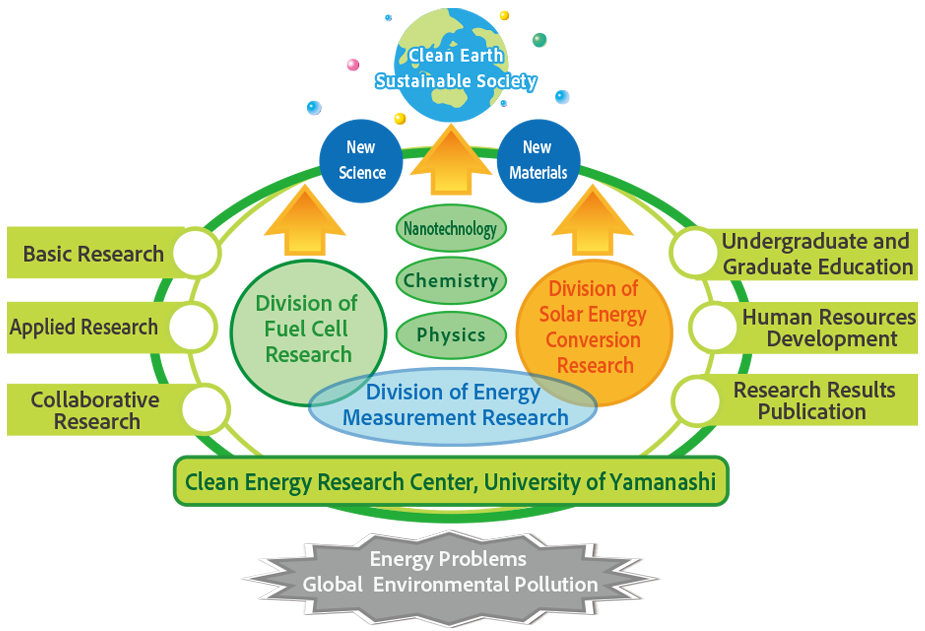Center Overview
The Center has been promoting studies related to clean energy for a long time. In 1978, fuel cell experimental facilities were set up as the first such research and development center for fuel cells domestically and internationally. New catalyst materials and human resource development fields were achieved with outstanding success. There have been outstanding achievements in the development of human resources, as well as the development of new materials such as catalysts. For our other study, based on the chemical reactions related to the birth of life in the universe under extremely low temperatures and with high vacuum conditions, we have discovered the “low temperature tunneling reaction” which has been expanding into industrial fields even today. In these two fields, as a University-affiliated facility, the Center, consisting of the Division of Fuel Cell Research and the Division of Solar Cells and Environmental Science, was established in April 2001 with a strong background in promoting research related to clean energy, with the aim of contributing to the resolution of energy and global environmental problems. In the Division of Fuel Cell Research, we are studying polymer electrolyte fuel cells and the fuel cell system for automobiles and household use, as well as solid oxide fuel cells for alternative energy for thermal power plants for future generations. In the Division of Solar Energy Conversion Research, which changed its name from the Division of Solar Cells and Environmental Science in 2016, we are investigating innovative materials for solar energy conversion, such as to hydrogen and valuable chemical fuels.
Roles of the Clean Energy Research Center
- Implementing pioneering fundamental studies related to clean energy, as well as exchanging and sharing technical information
- Expanding overall improvements of our country’s fundamental research levels and human resource developers at other universities and laboratories, by accepting researchers from other universities and national laboratories and also through cooperative research and shared use.
- Fostering and collaboration with researchers from industry.
- Accepting exchange students and collaborative researchers from other countries, encouraging students from Asian countries, while looking ahead to our future.

Download our brochure



